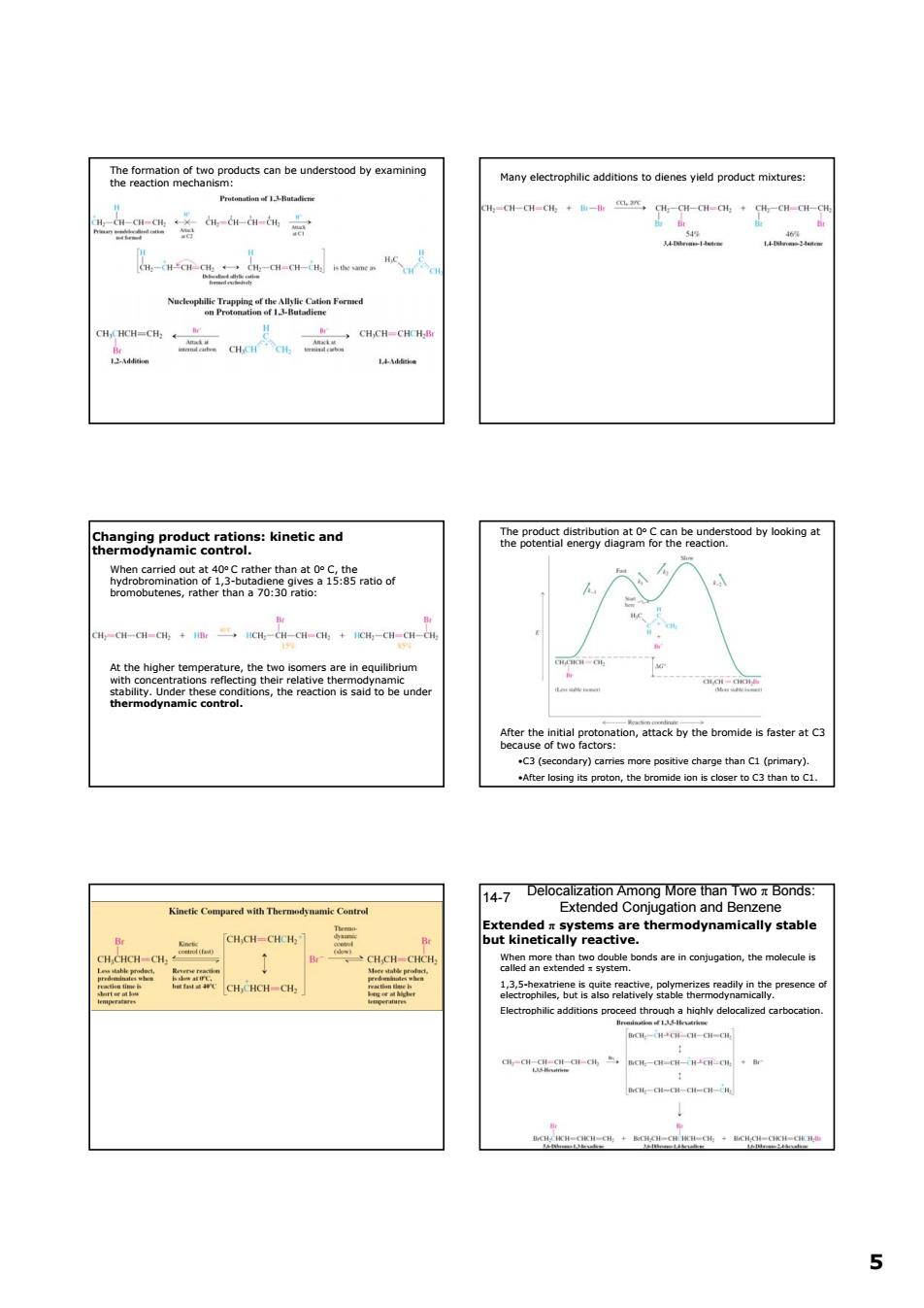正在加载图片...

Many electrophilic additions to dienes yield product mixtures: 色aaa言 danfad eanao3sritetontons:hneticand hermidanbytiagptf6ramebecetoodby1okngal o-o-c- the Cgleo侧Ctoatonatackbythebromaesasteratce Kineti Compared with Ceatrul CH-CHH ·CHCH onds are in coniugation.the molecule is aghahiahydelbcaleredarbocate o-o 5 5 The formation of two products can be understood by examining the reaction mechanism: Many electrophilic additions to dienes yield product mixtures: Changing product rations: kinetic and thermodynamic control. When carried out at 40o C rather than at 0o C, the hydrobromination of 1,3-butadiene gives a 15:85 ratio of bromobutenes, rather than a 70:30 ratio: At the higher temperature, the two isomers are in equilibrium with concentrations reflecting their relative thermodynamic stability. Under these conditions, the reaction is said to be under thermodynamic control. The product distribution at 0o C can be understood by looking at the potential energy diagram for the reaction. After the initial protonation, attack by the bromide is faster at C3 because of two factors: •C3 (secondary) carries more positive charge than C1 (primary). •After losing its proton, the bromide ion is closer to C3 than to C1. Delocalization Among More than Two π Bonds: Extended Conjugation and Benzene 14-7 Extended π systems are thermodynamically stable but kinetically reactive. When more than two double bonds are in conjugation, the molecule is called an extended π system. 1,3,5-hexatriene is quite reactive, polymerizes readily in the presence of electrophiles, but is also relatively stable thermodynamically. Electrophilic additions proceed through a highly delocalized carbocation